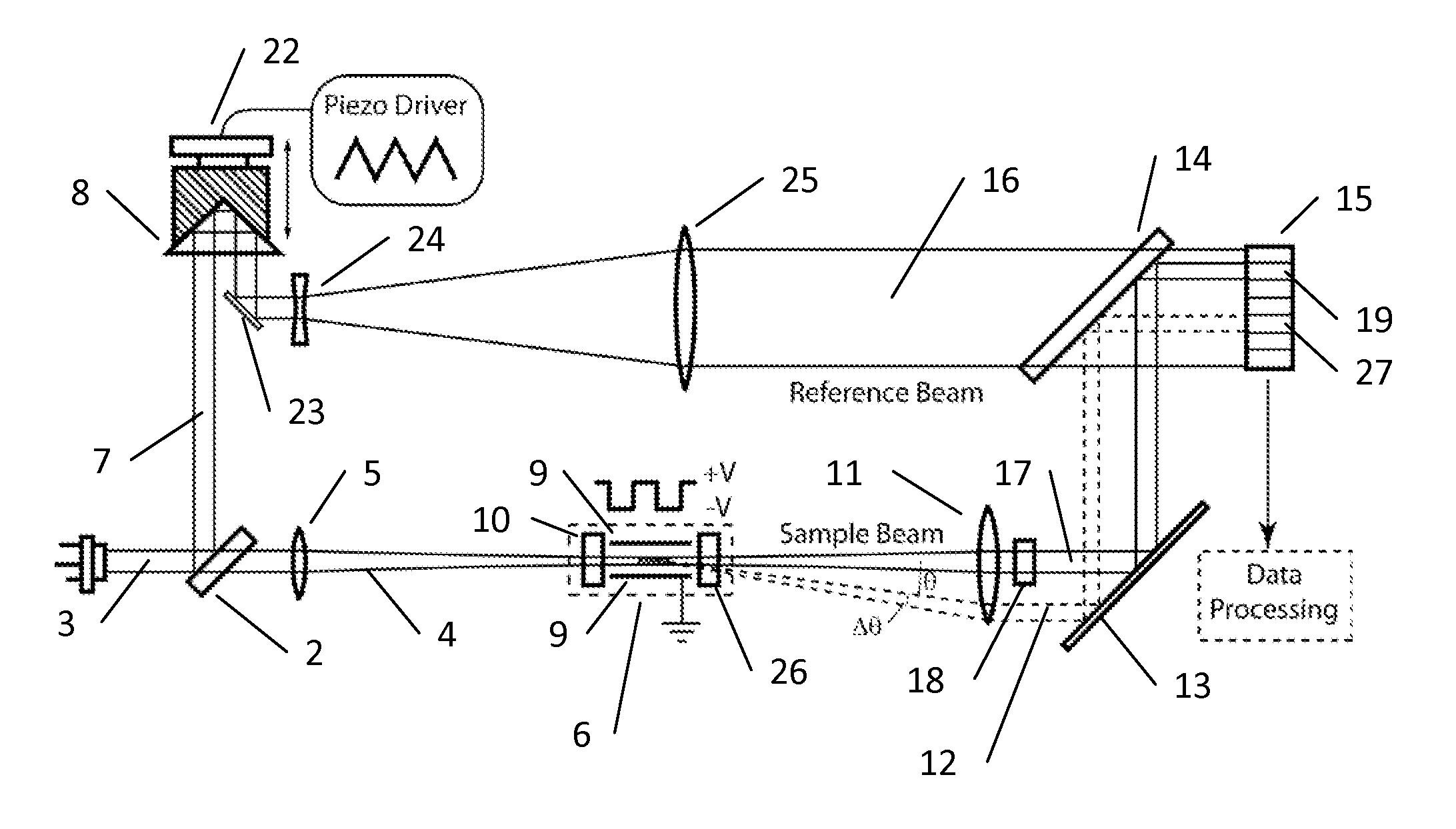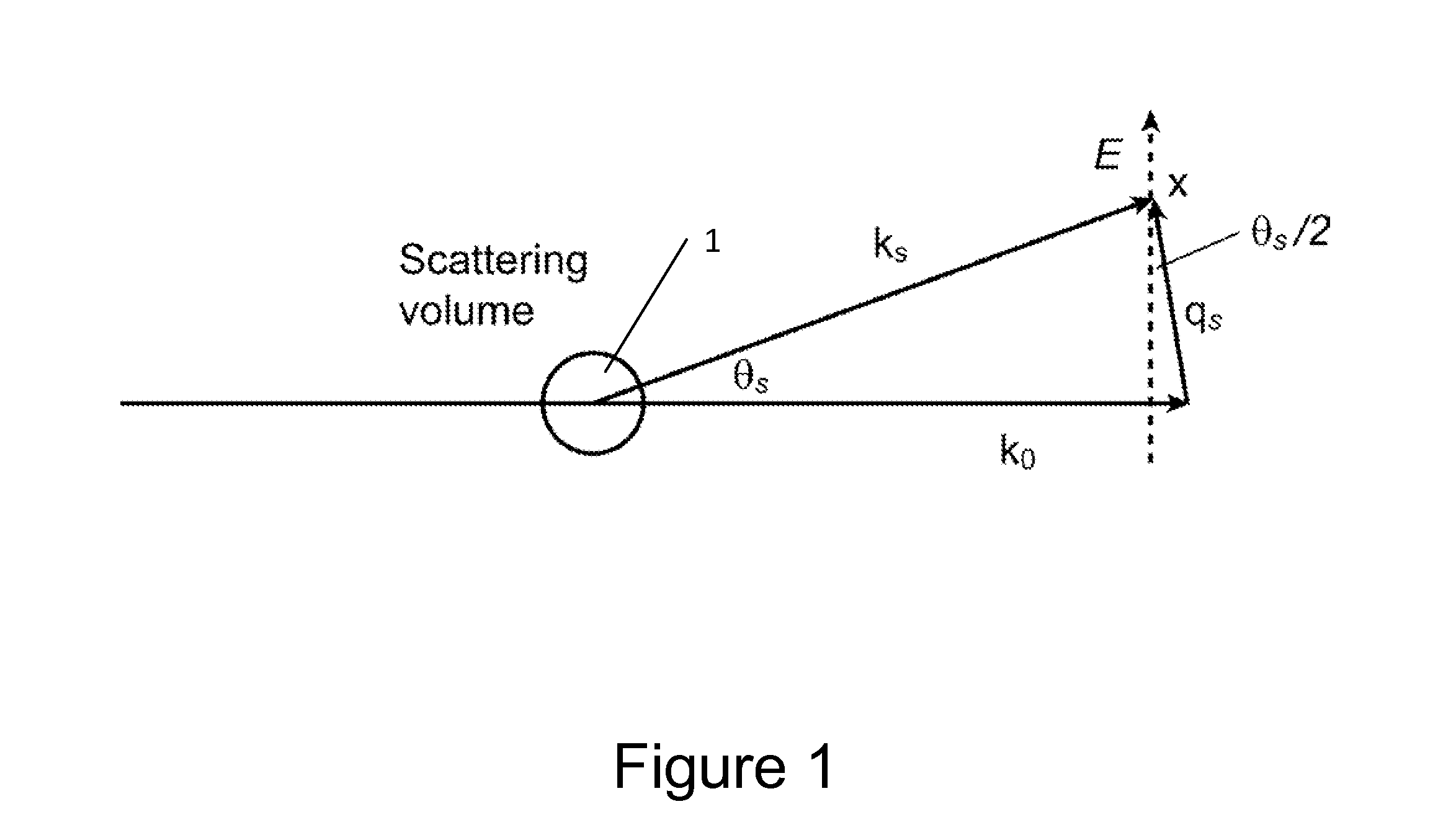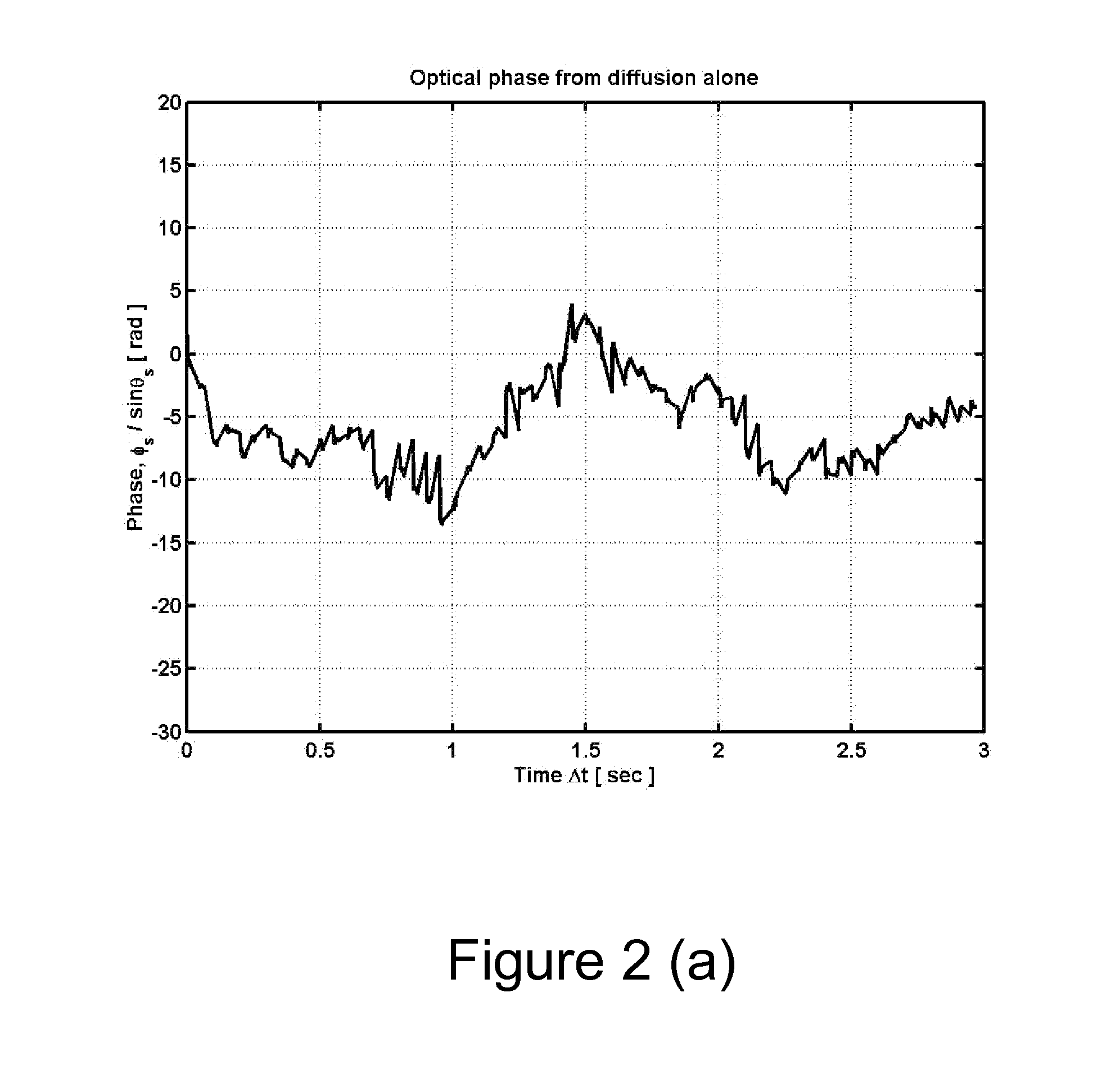Method and apparatus to measure particle mobility in solution
a technology of particle mobility and solution, applied in the direction of fluid pressure measurement, liquid/fluent solid measurement, peptides, etc., can solve the problems of reducing the measurement time associated with mp-pals and reducing so as to reduce the damage to fragile biological samples, improve the accuracy of mobility determination, and reduce the effect of measurement tim
- Summary
- Abstract
- Description
- Claims
- Application Information
AI Technical Summary
Benefits of technology
Problems solved by technology
Method used
Image
Examples
Embodiment Construction
.
[0007]Because the combined beam intensity ratios of the traditional PALS measurement are restricted to a relatively small range, the detection of the signals produced thereby requires use of a photomultiplier, PMT, or an avalanche photodiode, APD. Such detectors are expensive and can be severely damaged or even destroyed by their inadvertent exposure to ambient room light or other extraneous sources. Another important objective of this invention is to eliminate these expensive components while at the same time providing detection means that cannot be damaged by extraneous light sources. Because PMT and APD devices have very limited dynamic ranges, the light intensity and the ratio of the two beams must be continually adjusted to keep the detector within their linear ranges. Alternatively one must correct of the effects of the nonlinearity. An objective of this invention is to incorporate a detection means with a wide linear response so that such adjustments and modeling are unneces...
PUM
| Property | Measurement | Unit |
|---|---|---|
| size | aaaaa | aaaaa |
| electrophoretic mobility | aaaaa | aaaaa |
| voltage | aaaaa | aaaaa |
Abstract
Description
Claims
Application Information
 Login to View More
Login to View More - R&D
- Intellectual Property
- Life Sciences
- Materials
- Tech Scout
- Unparalleled Data Quality
- Higher Quality Content
- 60% Fewer Hallucinations
Browse by: Latest US Patents, China's latest patents, Technical Efficacy Thesaurus, Application Domain, Technology Topic, Popular Technical Reports.
© 2025 PatSnap. All rights reserved.Legal|Privacy policy|Modern Slavery Act Transparency Statement|Sitemap|About US| Contact US: help@patsnap.com



